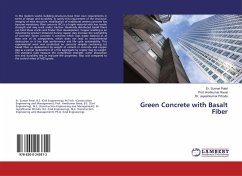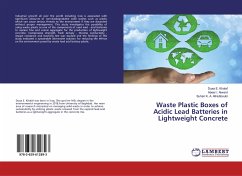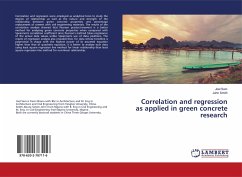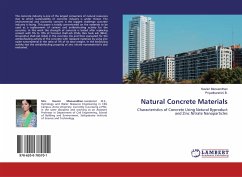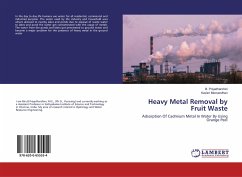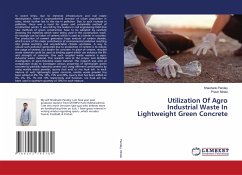
Utilization Of Agro Industrial Waste In Lightweight Green Concrete
Versandkostenfrei!
Versandfertig in 1-2 Wochen
36,99 €
inkl. MwSt.

PAYBACK Punkte
18 °P sammeln!
In recent times, due to immense infrastructure and real estate development, there is unprecedented increase of urban population in cities, which further led to the rise in pollution. Due to such increase in pollution, there was a need for green and sustainable method of construction works. It was felt by the leaders in civil engineering field that new methods of green construction have to be adopted by carefully choosing the materials which were being used in the construction work. An example can be taken of cement which is used as a binder in concrete. The production of cement generates huge ...
In recent times, due to immense infrastructure and real estate development, there is unprecedented increase of urban population in cities, which further led to the rise in pollution. Due to such increase in pollution, there was a need for green and sustainable method of construction works. It was felt by the leaders in civil engineering field that new methods of green construction have to be adopted by carefully choosing the materials which were being used in the construction work. An example can be taken of cement which is used as a binder in concrete. The production of cement generates huge amount of carbon dioxide, which is one of the major contributors of environmental pollution resulting into global warming and unpredictable climatic anomalies. A way to reduce such pollution generated due to production of cement is to reduce the usage of cement as a binder for concrete. In place of cement, recycled waste materials could be used as binding agent which can enhance the life andstrength of concrete. One such recycled waste material is agro-industrial waste material. This research aims at the proper and detailed investigation of agro-industrial waste material. This research also aims at comparative study to investigate various properties of lightweight green concrete by partially replacing cement and using different combinations by using marble waste powder, quarry dust and/ or rice husk ash. In each mixture of such lightweight green concrete, marble waste powder has been added at 0%, 5%, 10%, 15% and 20%, quarry dust has been added at 0%, 2%, 5%, 7% and 10% respectively, and however, rice husk ash has been used in optimum quantity of 10% for each mixture




